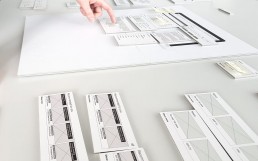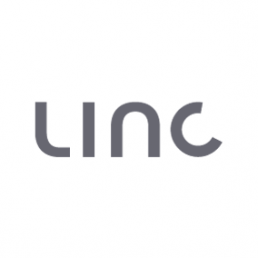For us, design means to create. Understanding the user, their context and tasks throughout their journey is our baseline for ideating solutions. This helps us predict “to-be scenarios” or user flows of the envisaged experience. We can then determine its structural logic and the information architecture. These activities are integrated with accompanying user research and evaluation during the design and development process. By constantly creating new iterations, we create optimal interaction solutions, maintaining a consistent focus on the user.
Ideation
In coordination with the aforementioned Design Sprint and Co-Creation methods, we use effective brainstorming techniques to attack project challenges from multidisciplinary perspectives. The key is to conduct targeted ideation based on user research. In many projects, we first analyze contexts in order to understand frame conditions as well as potential designs.
One example is our work around DApps and Blockchain UX, especially with regards to technology adoption challenges: → “Improving the Blockchain user experience – An approach to address Blockchain mass adoption issues from a human-centred perspective” by Maximilian Schmid, Nika Kitajewa and Leo Glomann

User Flows and Information Architecture
Visualising future scenarios in user flows is a highly efficient communication tool across teams and stakeholders. We start from high-level flows, and from iteration to iteration, define more and more detailed interaction steps. Depending on the digital system in question, information architecture diagrams are a more suitable way to communicate interlinks and relationships between information clusters.
As an example from one of our projects, we’ve interactively made use of user flows to foster team co-creation and to specify the solution’s interaction:
→ “Patient-Centered Design of an e-Mental Health App” by Leo Glomann, Viktoria Hager, Dr. Christian A. Lukas, Prof. Dr. Matthias Berking

Prototyping and Interaction Design
Our solutions come in many forms. Whether it involves VR, AR, voice interaction or common graphic user interfaces, we can prototype a design solution. For graphic UI design, we love creating Design Systems (i.e. Atomic Design) while simultaneously considering non-verbal communication such as Microanimations and transitions.
We are currently researching and developing prototypes for Augmented Reality applications. → “AR Operating System Experience” (work in progress – stay tuned)

